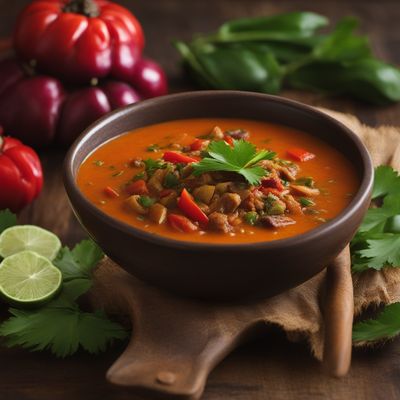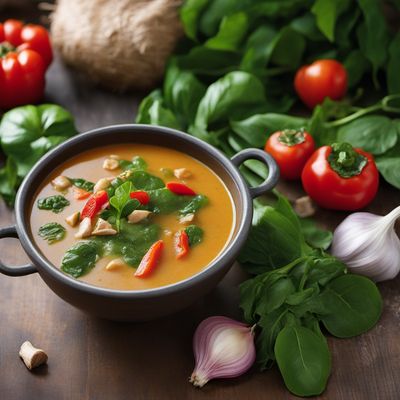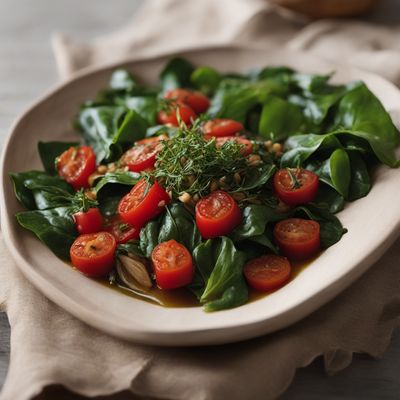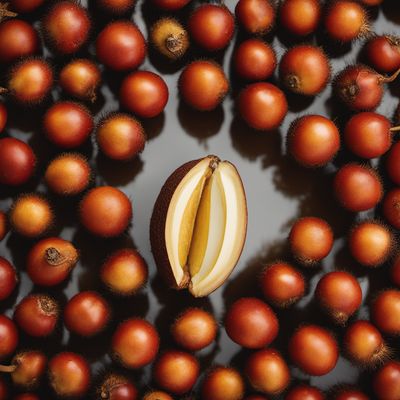
Ingredient
Oil palms kernels
The Golden Gems of the Oil Palm Tree
Oil palm kernels are the seeds found within the fruit of the oil palm tree. They are oval-shaped and covered with a hard shell. Once the shell is removed, the kernels reveal a creamy, ivory-colored flesh. They have a smooth and slightly oily texture, similar to that of a macadamia nut. The kernels have a mild, nutty flavor with a hint of sweetness, making them a delightful addition to both sweet and savory dishes. They are commonly used in baking, cooking, and as a source of oil.
Origins and history
Oil palm trees are native to West Africa, where they have been cultivated for centuries. The oil palm industry has a significant cultural and economic impact in countries such as Nigeria, Ghana, and Ivory Coast. The cultivation of oil palm trees spread to Southeast Asia during the colonial era, and today, Indonesia and Malaysia are the largest producers of palm oil and palm kernel oil.
Nutritional information
Oil palm kernels are a good source of healthy fats, containing monounsaturated and polyunsaturated fats. They are also rich in vitamin E, which acts as an antioxidant in the body.
Allergens
Oil palm kernels do not contain any known allergens.
How to select
When selecting oil palm kernels, look for ones that are plump, firm, and free from any signs of mold or damage. The shells should be intact and not cracked. If purchasing pre-packaged kernels, check the expiration date to ensure freshness.
Storage recommendations
To maintain the freshness and quality of oil palm kernels, store them in an airtight container in a cool, dry place. They can also be stored in the refrigerator or freezer to extend their shelf life.
How to produce
Oil palm kernels are typically produced on large-scale plantations. However, if you have access to an oil palm tree, you can harvest the fruit and extract the kernels manually. This process involves removing the outer fruit layer, cracking the shell, and separating the kernels from the shell.
Preparation tips
Oil palm kernels can be used in a variety of ways. They can be roasted and eaten as a snack, ground into a paste to make sauces or spreads, or used as an ingredient in baking. To roast the kernels, spread them on a baking sheet and bake at 350°F (175°C) for about 10-15 minutes, or until they turn golden brown. When using oil palm kernel paste in recipes, it adds a creamy and nutty flavor. It can be used as a base for soups, stews, or curries, or as a filling for pastries and desserts.
Culinary uses
Oil palm kernels are commonly used in traditional West African cuisine, where they are incorporated into dishes such as soups, stews, and sauces. They are also widely used in baking, particularly in recipes that call for nutty flavors or creamy textures. Additionally, oil palm kernel oil is a popular cooking oil in many parts of the world.
Availability
Oil palm kernels are commonly available in regions where oil palm trees are cultivated, such as West Africa, Indonesia, and Malaysia.
More ingredients from this category
Recipes using Oil palms kernels

Melanesian Palm Nut Soup
Tropical Delight: Melanesian Palm Nut Soup

Palm Nut Soup with a Twist
Savory Delight: African-Inspired Palm Nut Soup

Ekwang with a Twist
Savory Plantain and Vegetable Delight

Ekwang à la Occitane
Savory Occitan Plantain and Palm Nut Stew

Akwadu Stew with Plantains
Savory Delight: Akwadu Stew Infused with African Flavors

Poulet Nyembwe with Plantains
Savory Congolese Chicken in Creamy Palm Nut Sauce

Togolese-inspired Canapés with a Twist
Savory Delights from Togo: Spiced Canapés with Local Flavors
